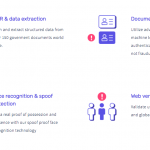This is Not the Tech Bubble All Over Again: 3 Tech Stocks That Will Be Crushed In 2015
January 22, 2015
In 2014 innovative tech stocks and companies enjoyed phenomenal shareholder support. Shareholders bought in to companies who were able to illustrate user growth rates and the development of new tech products.
What shareholders are slowly starting to recognize is that new products and user growth rates don’t necessarily equal a return for equity holders. In fact, more often than not, to create user growth and new tech products these same tech stocks are actually costing shareholders money by overspending on innovation with little or no return. This often times means a total loss on cost inefficient projects (i.e. Amazon’s Fire Phone).
We have heard many different “experts” stating that we are seeing bubble-like levels in the equity markets, and that the market will suffer from a bubble burst similar to the tech bubble bursting of 2000. Before we can identify which momentum tech stocks will be crushed in 2015, we need to understand the difference between the tech bubble of the late ’90s and the current bubble-like enviornment.
In the ’90s nearly all dot com companies were exceptionally highly valued, with many enjoying P/E’s over 200, P/S over 15 and P/B ratios well over 10. That is absolutely ludacris in terms of valuation from a fundamental valuation metrics standpoint. Bear in mind these experts are stating that the market is at bubble levels due to P/B ratios nearing 2.0. Let’s see, which is greater? P/S over 15 in the late 90’s or P/S nearing 2.0 currently?
We need to quantiy this a little further. Investors still have the market collapses we endured from 2000 through 2011 still fresh in their minds, and rightfully so. Many individual investor retirement accounts are only now returning to the values they were at before the market collapse. A knee-jerk reaction is somewhat warranted.
Also, the tech bubble pushed the entire market higher. Tech companies needed cash to expand. Banks, private investors and equity firms invested in those tech companies. Then, when those tech companies, who weren’t cash-flow positive when they first received their initial investments, went belly-up the investors were forced to write-off those investments as total losses.
When tech stocks fail, unlike brick and mortar type businesses, there are limited assets available to recover losses during the bankruptcy process. This means that even bond holders and Round A investors, initial investors, are hard pressed to recover their investment. This resulted in severe pressure being put on the banks and other investment institutions to recover their investment through alternative methods.
Enter the housing bubble and subsequent collapse.
Now we need to look at the current economic and market conditions. Yes, the overall market P/S ratio is nearing 2.0. The S&P 500 P/S ratio currently sits just above 1.8 to be exact. However, the economic situation couldn’t be more different now compared to the late 90’s. Here are some key differences:
- Existing home sales are still exceptionally weak. Comparable existing homes are cheaper than comparable new home prices. This means it is more expensive for home buyers to purchase a new home compared to an existing home. This is the exact opposite economic condition of the late 90’s when it was cheaper to buy a new home compared to a comparable existing home.
- We are in a rising interest rate enviornment, with interest rates projected to rise to 0.75 – 1.0% by the end of 2015. Investment “experts” disagree with this opinion, but there is a reason they are investment “experts” and not economists. ( See the latest Federal Reserve Minutes ) By 2000 we were in a falling interest rate and slowly creeping unemployment economy, which spurred individuals to refinance mortgages.
- The rental market is decidedly in a bubble. To rent a 1,200 sq. ft. property in Chicago compared to purchasing a comparable 1,200 sq. ft. property costs approximately 25% or more to rent vs. own. This also doesn’t take into account the lack of the accumulation of wealth that comes with individuals purchasing and making payments on a home, as opposed to renting which results in zero equity in a residence.
- The combination of the aforementioned housing market statistics creates a great deal of incentive for individuals who have been renting to purchase a home. A rising interest rate enviornment paired with bubble-like rental market conditions and a strengthening job market will drastically improve the housing market, and subsequently the banking sector as individuals need to finance home purchases.
As we can see, the economic climate is entirely different now compared to early 2000. The basis for the opinion that we are enduring the bubble effect in the overall market simply isn’t accurate. Corporate profits, revenues and earnings have been setting records for nine consecutive quarters now.
Where the bubble talk is somewhat accurate resides in the technology and social media spaces. However, this statement also needs clarification. These two spaces are nowhere near the levels or quite as similar to the late 90’s tech sector as people make it out to be.
Aside from the P/B, P/S and P/E that we mentioned earlier, it is important to note that during the 90’s dot com bubble more than 72% of the publicly traded dot com companies had PEG ratios of more than 50. In simpler terms this means that dot com companies share prices were growing 50 times faster than their respective earnings. That is certainly not the condition with the tech stocks and social media stocks currently.
There is a noticeable divergence forming between the best tech stocks and social media stocks to own and the rest. The key differential being noticed on a revenue per share basis.
Many tech and social media companies have been revered for their innovation and willingness to develop new products. Twitter, Facebook, WhatsApp, Vine and other social media players are touted for their massive user bases. Apple, Google, Amazon and other tech giants are applauded for developing new consumer tech that continually pushes the envelope.
Each of the companies above have very different management styles. Apple is probably the best test case for the rest of the field to heed. While Apple was determined in the 80’s to bring the most cutting edge product to market, it did so at the detriment of shareholders. If not for a sizeable investment by Bill Gates, Apple would have gone bankrupt. That is precisely why Apple now has the cash hoard it does today, refusing to ever endure that fate again.
Unfortunately for some companies and shareholders alike, these three companies’ management teams have not learned from the past. They too, much like Apple of the 80’s and the tech stocks of the tech bubble 90’s, have decided to disregard their shareholders to pursue their own objectives. While some of those objectives may be admirable, such as attempting to push technology further than anyone ever has, some objectives are rather self-serving.
Here are the three huge momentum tech stocks that will be crushed in 2015 due to their failure to maintain value for shareholders.
Google- Google is one of the best and brightest tech companies in the world. The debate between Google and Apple fans over which has the superior product has been going on for the better part of the past decade. Google has lost site of the value proposition they need to create for shareholders.
In 2014 Google conducted a stock split issuing an entirely new class of share for the general shareholder. These new shares have effectively zero voting interest in matters of actual importance to the tech giant. Google also has very lofty fundamental valuation metrics with a P/E north of 26, a Forward P/E of 16.7, a P/S of more than 5, and a PEG of 1.22.
The lofty valuation is paired with some projects that are costing shareholders additional revenue by way of increased costs. Google’s driverless cars and wearable tech (smart watches specifically) do not add additional profit to the balance sheet. At this point both of these items cost Google money to develop, test and produce. While R&D is required, and Google is determined to keep pushing the technology envelope, Google is in desperate need of a game changer in terms of creating value for shareholders. At this point, the only option they may have is issuing a dividend to their shareholders.
Twitter- Twitter is the most popular source of news for individuals of 34 years and younger. The social media news outlet still has an impressive growth rate, although beginning to slow on a year over year basis as shown in the last two earnings conference calls.
Where Twitter has faltered is in their inability to manage their own market capitalization correctly. Twitter was given an astronomical market capitalization, or valuation by the market, because of the growth rate and expected ability of management to monetize the social media business. Twitter had a perfect model to follow in Facebook, who also had an above market value market cap.
Facebook used that market cap to acquire other companies to broaden their user base, expand user growth and expand product offerings. Twitter failed to successfully accomplish any of those tasks with their lofty market cap. Subsequently, Twitter’s stock has fallen from $ 70 per share to less than $ 40 per share.
Twitter’s stock still has plenty of room to fall unless they turn things around. Either Twitter needs to make a sweeping change at the senior management level or Twitter needs to use what market cap they have left to start making acquisitions to broaden the user base and product offerings.
Amazon- Amazon’s fundamental valuation metrics are unfathomably high. The current P/E isn’t even applicable, which is never a good thing because it means it is that overvalued. Amazon has a Forward P/E of more than 300. You read that right, 300! They also have a PEG ratio of -8.7!
These metrics simply don’t measure up, or add up for investors to rationalize giving the consumer tech company such a lofty valuation. Next we add in the thought process of Jeff Bezos. To preface this statement, it is not our own but rather Jeff Bezos’s himself. Jeff Bezos does not want to push technology further than anyone has before (a la Google). Jeff Bezos does not want to connect the world (a la Facebook and Twitter). Jeff Bezos wants to “rule the world.” To accomplish that goal he has pushed shareholder concerns aside to pursue what he believes will best serve that interest. Amazon Now, the 1-hour delivery service Amazon just unveiled , is yet another illustration of Amazon’s disregard it’s shareholders.
While Amazon Prime may have enjoyed a successful holiday season with 10 million new members signing up, that will hardly put a dent in the valuation deficiency of the share price. Even with Amazon less than 10% above their 52-week low, the stock will endure a great deal more pain before Jeff Bezos realizes he needs to relinquish control of the business to a more astute individual or team.
Business & Finance Articles on Business 2 Community
(140)














